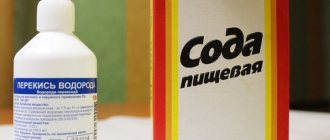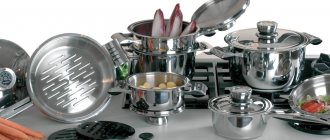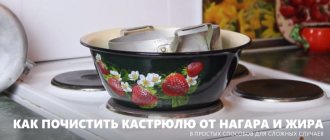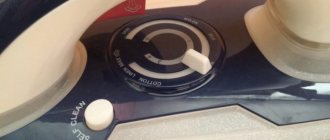A microwave oven is an indispensable thing in any kitchen. It defrosts food, prepares food, and reheats ready-made meals. Frequent daily use leads to rapid contamination of the internal surfaces of the unit, so it must be washed frequently. Not every housewife has time for this, and every housewife will not refuse to learn how to clean the inside of a microwave. A quick method that does not require much labor will be useful to everyone. There are several such methods, and they all involve the use of the most common means.
For one of the cleaning methods you will need lemon Source nbcnews.com
Preparation
Before you start cleaning the microwave at home from grease, carbon deposits and other contaminants, you need to prepare:
- Be sure to disconnect the device from the mains by unplugging the plug from the socket (however, this step is only carried out if you do not use the self-cleaning function of the stove or do not use a steam bath).
- When washing the device, carefully wring out the cloth, making sure not to allow too much water to penetrate inside (this can flood sensitive parts of the device). Liquid should also not get on the side grilles.
- Decide right away how you will clean the oven. Prepare all consumables, cleaning compounds, and protect your hands with gloves.
IMPORTANT! You cannot disassemble the microwave into its component parts yourself (even for cleaning). If contamination somehow got inside, it is better to seek help from a specialist.
Mustard powder
One of the folk recipes based on mustard is also quite good for cleaning the microwave cavity. To a glass of water (100-150 ml) add 1-1.5 tbsp. l. mustard and stir to a paste. Rub the oven walls with this mixture and leave for 15 minutes. After contamination, rinse with warm water. You can also use ready-made mustard. Then add a small amount of water, or apply thick mustard.
Mustard is a natural antiseptic that effectively removes fat.
The fastest way is with vinegar
In order to quickly wash the inside of the microwave, it is not necessary to use any expensive purchased products. You can use regular vinegar. This effective method will help you easily and efficiently get rid of not only minor contaminants inside the microwave, but also unpleasant odors.
You will need:
- vinegar 9% (or vinegar 70%);
- water;
- small capacity;
- microfiber cloth.
Step-by-step instruction:
- Step 1 In a small container, mix 2 tbsp. spoons of vinegar 9% (you can replace them with 1 teaspoon of vinegar 70%) and 2 glasses of clean water.
- Step 2 Place the bowl with the mixture in the microwave.
- Step 3 Turn on the stove to maximum mode, set the timer for 10 minutes.
- Step 4 After this, turn off the device and leave the container with the product inside for another 60 minutes so that all the acidic steam has time to settle on the inner surface of the device and remove yellowness, grease, carbon deposits and other types of contaminants.
- Step 5 Thoroughly wipe the inside of the device with a dry cloth, removing any remaining dissolved dirt.
- Step 6 Open the oven door and leave the appliance to ventilate (the smell of vinegar should completely disappear).
The vinegar bath cleaning method works effectively on simple stains (it may not cope with old deposits). This method should be used with caution by those who clean a microwave oven with an enamel coating in the chamber.
What can't you do?
Cleaning with food grade sodium bicarbonate is a gentle method. But in the case of microwaves, precautions are taken to wash the microwave with soda and not damage the oven.
Enameled appliances have limited resistance to powder. Therefore, it is usually washed with a solution or steam is created. Cleaning with powder leaves scratches. You cannot clean enamel with dry or moistened powder.
It is worth remembering that stoves with stainless steel surfaces or ceramic coatings cannot be cleaned with acidic compounds. Citric acid is dangerous for them. But they tolerate powder well in dry form and steam from a simple soda solution.
Method 2 - Cleaning with citric acid
You can also quickly and effectively clean the inside of a microwave using citric acid. The method perfectly washes away any type of contaminant, be it old carbon deposits or fresh greasy marks.
You will need:
- boiling water;
- lemon acid;
- paper towels;
- small bowl.
How to clean:
- Mix 500 ml of boiling water and approximately 25-40 g of citric acid in a small container.
- Place the bowl with the ingredients in the microwave.
- Set the maximum power on the display and set the timer for 10 minutes.
- After the allotted time, remove the container with the cleaning composition from the oven.
- Using paper towels, begin to carefully remove any loose grease or dirt, paying particular attention to the glass disc on which the utensil is placed.
Here's a good video that shows both the process and the result:
If you feel that after the first use not all the dirt has softened, and the inner surface of the microwave is still shiny with grease, then return the container with water and citric acid, again set the power of the device to maximum and the timer for 5 minutes. The secondary procedure should help completely dissolve the dirt, so that it will be much easier to scrub off difficult stains.
Cleaning instructions
Citric acid powder is an affordable, readily available product, the correct use of which allows you to quickly restore shine and radiance to the surfaces of the microwave oven.
Everything is very simple:
Pour one sachet of citric acid into a glass container (bowl, jar) and add half a liter of water.- Place the container in the microwave.
- Turn on the household appliance for five minutes at maximum power.
- After turning off the timer, wait another five minutes, after which the container can be removed and the walls can be wiped with a soft cloth.
If you need to clean very old, stubborn stains and stuck food debris, add 10 grams of baking soda to the water along with the lemon cyst.
Method 3 – Cleaning the microwave with baking soda
A good helper in the fight against dirt in the microwave oven is soda. The product perfectly helps to clean the inside of the microwave from grease without effort, and in combination with lemon peels it also works as a “freshener” for the microwave.
You will need:
- two well-moistened rags (for a preliminary steam bath);
- soda;
- small capacity;
- paper towels;
- lemon peel.
How to clean:
- First of all, soak two rags in clean water.
- Place wet towels on the glass disc, close the device, set the maximum power on the display, and set the timer to 60 seconds.
- After the allotted time, unplug the stove and use the same damp towels (wring them out first) to begin wiping the device, removing softened dirt from the walls, door and disk.
- Dilute 2 tbsp in a small amount of water. spoons of soda, and thoroughly wipe the glass disk, door and inner walls of the stove with the resulting mixture.
- After this, wipe the device dry with paper towels and leave it to air for a while.
Reviews
Victoria. I think all housewives know how difficult it is to remove baked stains in the microwave. You have to scrub the expensive coating with a wire brush while standing in an awkward position. But it’s good that the Internet comes to the rescue. I found an excellent recipe: in a deep plate, mix a tablespoon of soda and 200 ml of water, add 10 ml of acetic acid, put it in the microwave and wait until it boils. We take out the dishes and simply remove the dirt with a cloth. Copes with any raid the first time. Now this is the only method I use.
Catherine. I recently discovered the simplest method for cleaning a microwave oven from grease deposits. I tried so many products before, but none of them completely satisfied me: either the price was too high or the result was unsatisfactory. A friend advised me to do the following: pour water mixed with a small amount of vinegar into a plate and put it in the microwave to heat for 5 minutes. I took the proportions by eye. After the allotted period of time, I ran a soft cloth along the walls and saw that the fat easily fell off. The whole procedure took about 7 minutes. Now I won’t buy cleaning products in stores.
How to clean a kettle with soda.
Method 4 – Sponge + dishwashing detergent
Regular dishwashing detergent can also cope with traces of grease and old carbon deposits in a microwave oven.
You will need:
- sponge for washing dishes;
- any dishwashing detergent;
- paper towels;
- latex gloves.
How to clean:
- If you are the proud owner of a dishwasher, then you can first remove the glass disc from the microwave oven and wash it in it. If you don’t have a PMM, then don’t worry, you can clean the glass plate manually with the same composition that is used to wash the entire oven.
- Squeeze the sponge generously soaked in water slightly (so that water does not drip from it). Apply dishwashing liquid to it (it is better to use proven products that remove grease well, for example, the same “Feri”).
- Squeeze and unclench the sponge several times to whip the product into a foam.
- Place the foam sponge in the microwave, close it, set the display to minimum power, and set the timer to 30 seconds. Turn on the device.
- Using a clean sponge, remove all dissolved contaminants from the internal surfaces of the device.
- After this, use paper towels to once again go over all the walls inside the microwave, wiping off any remaining product and dirt.
An interesting way to remove dirt from the internal surfaces of a microwave is to use orange peels infused with plain water. The life hack can be used to remove different types of stains.
You will need:
- peels from one orange;
- water;
- small capacity.
How to clean:
- Peel the orange. Cut them into small strips and place in a shallow container.
- Fill the crusts with a small amount of clean water so that the water only slightly covers them.
- Place the container with the crusts in the microwave and close it. Set the maximum power on the display and turn the timer up to 1 minute.
- After the timer rings, do not open the oven. Leave the container with the crusts inside for 1.5-2 hours.
- After the allotted time, open the microwave and remove the orange solution.
- Wet a napkin in clean water and wring it out so that water does not drip from it and flood the inside of the stove.
- Use a damp cloth to remove any loose dirt from the walls, glass disc and door.
- Wipe the cleaned microwave oven dry with a cloth or paper towel (you can leave the appliance open for a while to dry completely).
This recipe effectively cleans many types of stains. So if you were not able to remove all stains and traces of scale the first time and are still too far from being “clean”, then repeat the procedure 2-3 times. After each use, carefully clean out all dissolved fat and only then repeat the procedure again.
Chemicals
How to use chemical compounds. Manufacturers produce special cleaners for microwave ovens. When purchasing them, be sure to read the instructions. Follow the rules for using chemicals in your home:
- apply in an even layer;
- leave the applied composition for the time indicated on the box: for several hours, for the whole night;
- then rinse and wipe the surfaces;
- Be sure to wear rubber gloves.
Popular brands
Preparations that have proven themselves:
- TOP HOUSE is a super effective cleaner. Especially for household appliances.
- "Mr. Cleaner" - cleans ovens and microwaves.
- Wpro, Electrolux, Sun Clean and other professional “care cosmetics” for grills, ovens and other household appliances.
You can also use regular compositions for cleaning ovens and even “Fairy”. It is applied, foamed, left for half an hour and washed off.
Method 6 - Laundry soap
Regular laundry soap can also help in the fight against a dirty microwave. It not only helps remove old fat from the walls of the chamber, but also has a disinfecting effect.
How to clean:
- Step 1 Grate a bar of laundry soap.
- Step 2 Add soap shavings to water. Calculate the proportions by eye; in the end you should get a saturated soap solution without pieces of soap.
- Step 3 Apply the mixture to the inner walls of the microwave chamber and leave it for 45-60 minutes.
- Step 4 Remove any remaining soap solution using a damp cloth (rinse the cloth in clean water as often as possible).
- Step 5 Open the microwave door and leave the device to ventilate for a while (this will help remove the soap smell).
Household chemicals
If you cannot clean the microwave oven with improvised means, you need to use household chemicals.
On the market you can find a lot of different compositions that are suitable for cleaning microwave surfaces (including grill grates and stainless steel elements).
Choose only specialized products designed for cleaning microwave ovens. Pay attention to the composition of the drug; it should not contain abrasives or aggressive chemical compounds.
Be sure to read the operating instructions for your stove and make sure that the manufacturer allows the use of certain substances when cleaning the device (especially if the device is built into a kitchen unit).
The best microwave cleaners:
- Fairy;
- AOS;
- Fresh;
- MAGIC POWER;
- SANO;
- MEULE;
- Korting;
- Electrolux;
- Green&Clean.
Advantages and disadvantages
The main advantage of citric acid as a microwave oven cleaner is its availability and low cost .
If necessary, a bag of citric acid can be purchased at any store, and it will cost mere pennies.
Among the disadvantages, some limitations in use are noted . The thing is that an aggressive acidic environment has an extremely negative effect on enamel-coated microwave surfaces.
Prolonged contact with acid can cause cracks and swelling of the enamel coating.
Microwave self-cleaning function
Many housewives have probably noticed that some microwave ovens have a built-in self-cleaning function.
The “Self-cleaning” mode may have different names for different models of microwave ovens, but the principle of its operation is always the same: you simply place a container of water inside the device and select the desired mode to self-clean the device.
While the stove is operating, the water will evaporate, dissolving fat, scale, and soot deposited on the walls of the device. After this procedure, the dirt will be much easier to wash off even with an ordinary damp cloth.
However, everything described just sounds ideal. In fact, self-cleaning alone is usually not enough for the device. The steam bath function is rather auxiliary; it can be used to preliminary prepare the device for cleaning.
So you shouldn’t expect any miracles from such a procedure; in case of severe contamination, it is unlikely to even help dissolve the dirt the first time, not to mention complete cleansing.
Types of interior coatings for microwave ovens
In order to figure out how to clean your main assistant in the kitchen, first familiarize yourself with the types of interior coatings. This largely depends on what method you use to clean the oven. After all, some of them simply cannot tolerate sponges, while others are badly affected by lemon. If you do not take this into account, you can irrevocably damage the device simply by trying to clean it. And this can be very offensive.
We will talk about five types of coatings and their features:
- The cheapest microwave models are coated inside with enamel paint. This coating does not require special care, it does not contain large pores, and, therefore, it is quite easy to clean. However, high temperatures often lead to breakdowns of these particular models, since the coating cannot withstand it.
- More expensive options are coated with fine enamel inside. It is a little stronger, but still does not reach the ideal characteristics of a microwave oven.
- For frequent and long-term use of stoves in the home, stainless steel models are best suited. However, the big disadvantage of such models is that cleaning them requires effort. Firstly, ordinary sponges and detergents lead to scratches when we clean the microwave with them. And secondly, odors are very absorbed.
- The ceramic coating prevents the microwave from remaining sticky after use and is very easy to clean. This coating is very even and smooth, any grease can be easily washed off with a rag. In addition, it has antibacterial properties.
- Modern budget models are usually coated with acrylic. This material is not designed for high power, but it is very easy to wash this model after use. You need to pay attention to this when buying a stove. If you don’t know which one you have, then look at the product data sheet. It's definitely written about it there.
Which coating to choose is up to you
And also check right away if you don’t know which parts should never be wetted. This information will definitely come in handy when cleaning your device.
Bringing beauty outside
Cleaning the outside of a microwave oven is, of course, much easier than cleaning the inside. Here you can use not only specialized products for cleaning microwave ovens, but also, for example, glass cleaners in the form of a spray.
A solution based on vinegar (white food grade 9%), water and ethyl alcohol (the components are taken in a ratio of 1:2:1) also copes well with stains.
Cleaning the oven outside:
- Remove all dust from the surface of the case.
- Wipe the back panel of the microwave with a dry or slightly damp sponge (it’s better to use a dry cloth).
- Spray the oven door, top and side walls with a cleaning solution.
- Leave the product on for 5-8 minutes and then remove any remaining residue with a microfiber cloth.
- Wipe the housing dry with a clean cloth.
Useful tips
It is easier to clean the outside of the stove than the inside, since stains do not “stick” here. But the outer walls may change color and turn yellow over time. You can return them to their original whiteness using chlorine bleach or hydrogen peroxide.
To do this, you will need old towels or sheets, which are soaked in the solution and wrapped around the body of the unit. To prevent the product from evaporating and drying out, cover the top of the microwave with film and leave it like that overnight. In the morning, all you have to do is empty it and wipe it clean with a damp cloth.
Before cleaning the inside of your microwave, it’s a good idea to read the following guidelines.
- Do not wash the inner walls with water or a sponge that is too wet, so that moisture does not get behind the grille.
- Do not use melamine sponges, which crumble too much - small particles falling behind the grate can cause a fire.
You need to clean the oven with a regular dish sponge, wrung out until slightly damp. Source kitchenremont.ru
- It is also not recommended to use metal brushes and sponges, abrasives and products not intended for microwave use.
- The enamel walls of the chamber can be damaged by frequent use of acidic cleaners or high concentrations, so it is better to choose more gentle methods for them.
How not to clean a microwave
In order for the microwave oven to be washed correctly and not lead to damage to the electrical appliance, you need to follow several important rules.
- When cleaning, do not use metal sponges, brushes, scrapers or sponges that leave behind crumbs. You shouldn't rub the surface too hard either. You may damage the body and the camera itself.
- Be careful with water when washing. Do not flood the device with water, wash it in the shower (yes, such cases do occur), or use rags that are too wet. If liquid gets inside the device, a short circuit may occur, and you definitely don’t want that.
- Do not use cleaning products containing abrasives or aggressive chemical compounds. Only specialized preparations for microwave ovens or dishwashing detergents.
How to clean properly
The choice of cleaning agent depends on the inner shell of the microwave.
The most common types of coatings are:
- Enameled is the most common type. The main disadvantage is that it is easy to scratch, but dirt can be removed without much effort.
- Stainless steel - a greasy deposit quickly appears, which is difficult to wash off. Do not use acidic products as they may cause the material to darken.
- Ceramic - resistant to the formation of grease stains, does not require serious care. The coating is very fragile, so cleaning must be done with soft materials.
You can purchase the cleaning product at any hardware store. Now manufacturers offer products for every taste, including those made from natural ingredients or low in acids.
Home methods for removing grease from microwave ovens are gradually losing their popularity, but they can still provide emergency assistance in cases where it is not possible to go shopping.
How to keep your microwave clean
If you hate cleaning and think about washing the microwave every time with a shudder, try following a few recommendations that will save you from having to look for an effective cleaning agent every time that removes old dirt from the oven chamber:
- Tip #1 When reheating, cover the plate with food with a cap or cling film. You can also use special closed containers with valves. This will help avoid splashing of fat, juice and food particles.
- Tip #2 Do not allow a thick layer of contamination to form. If food or fat is scattered throughout the chamber, remove everything immediately, without allowing it to dry out or burn.
- Tip #3 Wipe your microwave oven daily with a damp cloth, inside and out, to remove even the slightest dirt.
- Tip No. 4 If you use your microwave oven often, then thoroughly clean it at least once a month.
What to do to keep your microwave clean
- Thaw food in deep bowls to avoid staining the glass tray of the microwave.
- Cover food with a special plastic cap, cling film or parchment paper when reheating.
- Do not place foods that may explode (such as whole chicken eggs) in the microwave.
- After use, wipe the walls of the microwave with a paper towel and leave the door open for a couple of minutes to remove the smell and remaining moisture.











